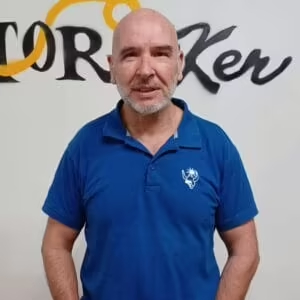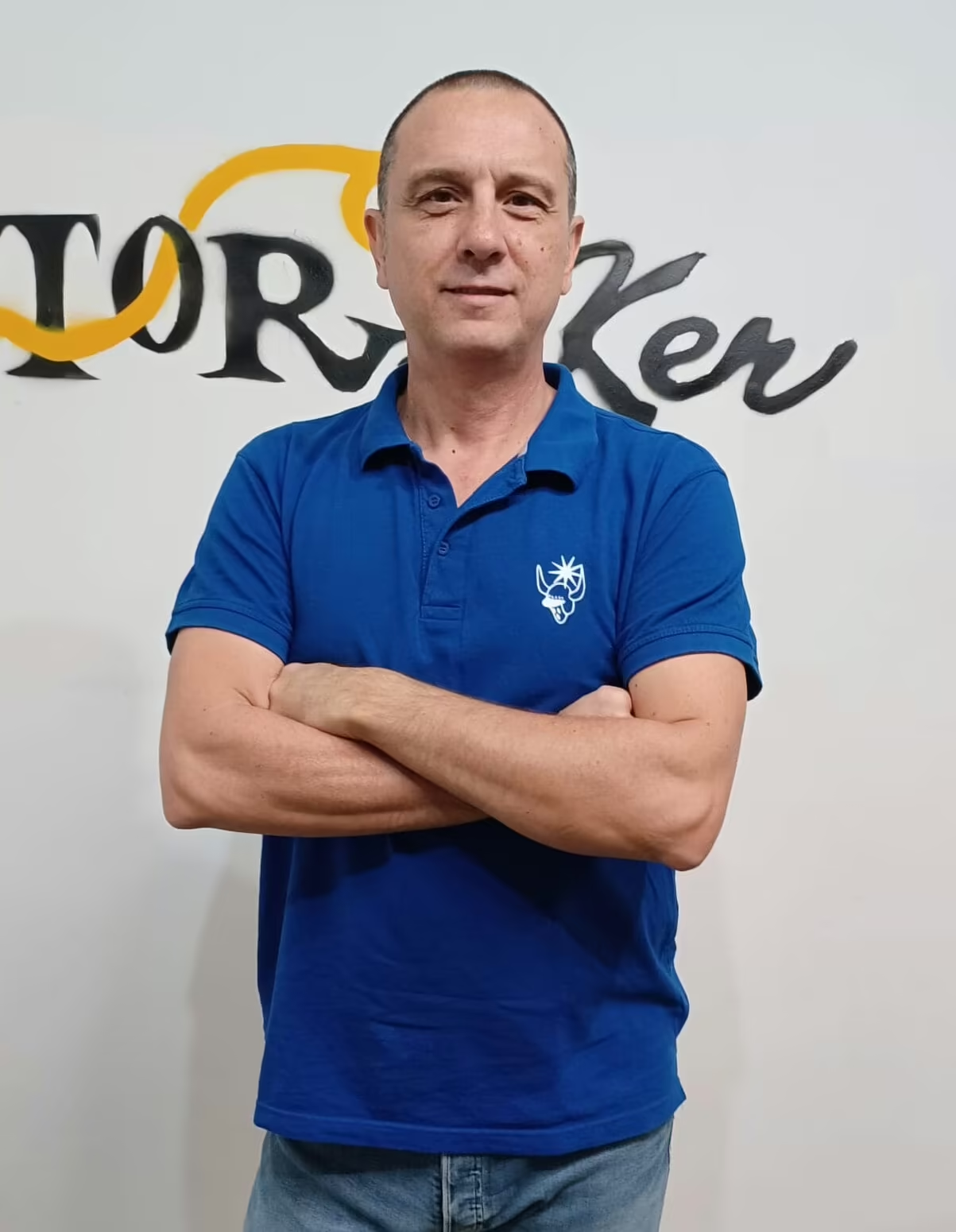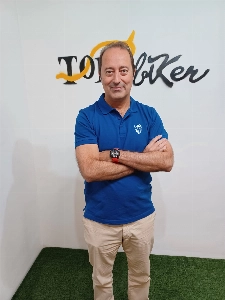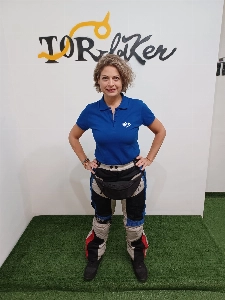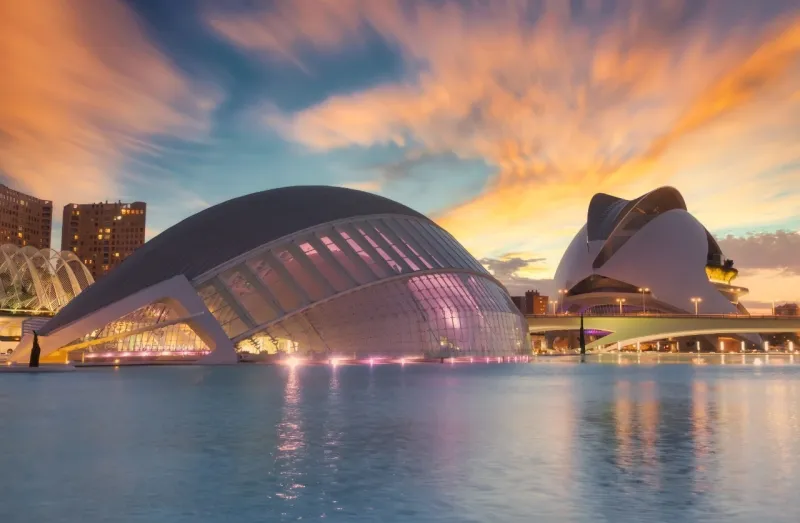
The first day of the route is, as always, the day to pick you up at the airport, port, or train station in Valencia; we will be there at the time you arrive to take you to the hotel and calmly check in with enough time to rest and freshen up before dinner at the selected restaurant.
Don’t forget to let us know your expected arrival time and place so we can organize and pick everyone up properly.
If you come with your own motorcycle, we will tell you which hotel to go to—just arrive whenever you want, check in, and join the group when everyone is together.
Without a doubt, the ideal is to schedule your arrival in Valencia in the morning; this way, the group can have the safety briefing, distribute jackets, gloves, and helmets for those who need them, and pick up and assign the motorcycles for those who rented one for this guided motorcycle route. All this should happen in the afternoon of the first day, so as I said, please plan your arrival before lunch so we can carry out all the scheduled activities with enough time. This first day is not a good day to be rushed, keep that in mind.
At the end of the afternoon, we will go to a restaurant near the selected hotel to enjoy the welcome dinner!
After dinner, we will go to sleep to be ready for the start of the adventure tomorrow.
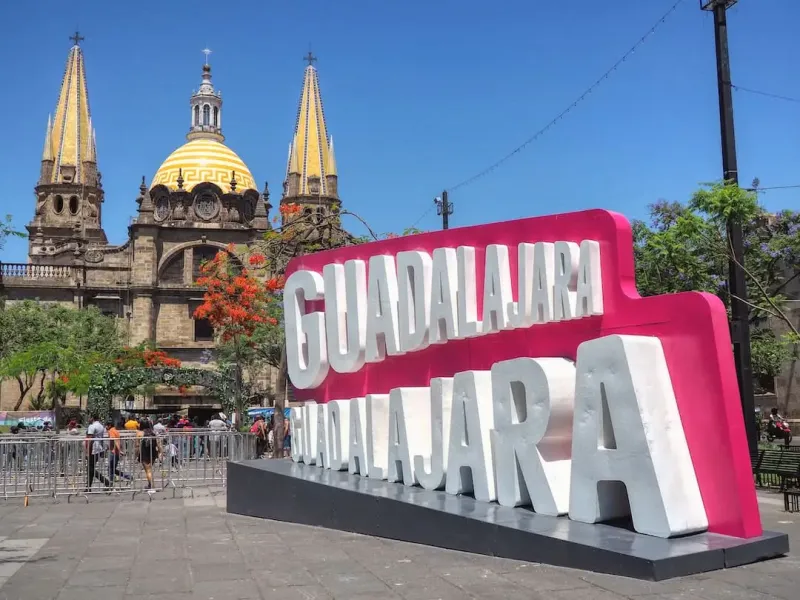
After breakfast, we kick off the first day of the route and leave the coast behind to dive straight into the plateau.
We’re going to treat our senses to the views, smells, and light of golden fields that seem endless, gentle hills inviting you to slow down, and little towns that hold a long history. But hey, it’s not all riding: we’ll stop for lunch at a Castilian restaurant, one of those places that smell like tradition and where food isn’t just eaten—it’s savored in every bite.
Once the culinary delights are done, we’ll arrive in Guadalajara, a gem with so much history it feels like it came straight out of a movie, with a stately vibe that makes you feel part of something big. Sometimes it’s hard to describe the feeling you get arriving at a town like this—you just have to experience it.
The hotel I’ve carefully chosen, because resting well is almost as important as enjoying the ride. After settling in and freshening up, we’ll take a walk to soak up the essence of Guadalajara. To close the day, dinner at a traditional restaurant where the house specialties will make sure you understand that gastronomy is truly part of our organized motorcycle tours.
After dinner, as usual, we’ll head to bed—first stage done, well-deserved rest to recharge for what’s next. Good night.
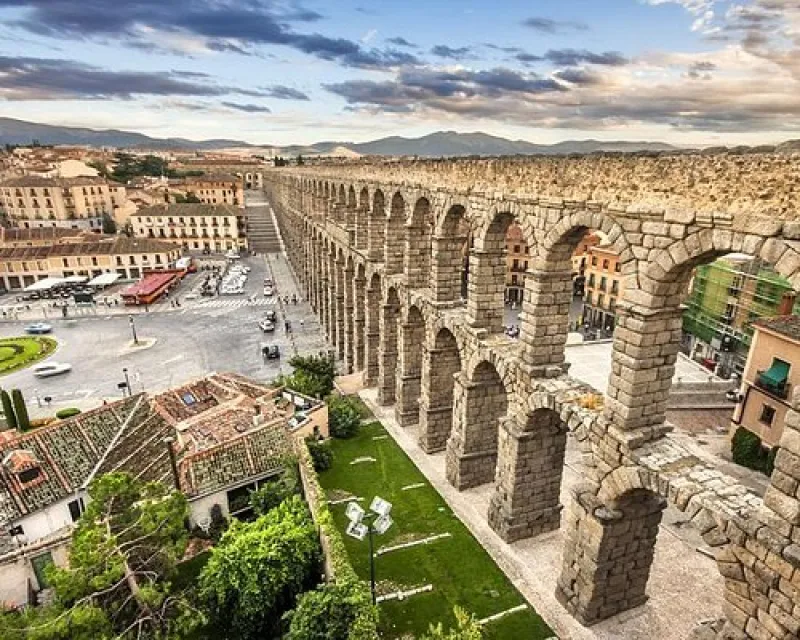
Second day of the route, batteries recharged and ready for what’s coming after breakfast, because on this stretch from Guadalajara to Segovia we’re going to enjoy the winding roads that cross through the Barranco del Río Dulce Natural Park. This was actually the natural backdrop for the legendary series “El Hombre y la Tierra” by Félix Rodríguez de la Fuente (they even have a viewpoint in his honor). I recommend that, always keeping safety in mind, you take a glance at the sky from time to time — we’ll probably be accompanied by some griffon vultures, golden eagles, or peregrine falcons on this part of the ride… pure nature at its best.
We’ll leave behind memories of our “Amigo Félix” to keep carving through curves at the base of the Pico del Lobo‑Cebollera Massif, a high-mountain spot with peaks over 2,200 meters that will keep us smiling all the way to one of Spain’s best-known cities: Segovia.
Every time I’ve visited Segovia, I’ve loved the calm that surrounds it. I’ve gone in winter with the cold, and in summer with the heat, and honestly, the weather doesn’t really matter. Just stopping to take in its eternal aqueduct, understanding the scale of the construction, the way it was used, and the incredible durability with which the Romans built it, is absolutely mind-blowing. I can’t help but “touch with my hands” those stones that stand as silent witnesses to the passage of centuries.
Let me give you some facts so you really grasp what we’re talking about:
It dates back to the late 1st or early 2nd century AD. As they say, it’s older than dirt.
It was designed to carry water from springs in the Sierra de Guadarrama (~15–17 km) all the way to the city. Amazing — it moves water by the simple force of gravity.
It uses a system of 20,400 solid granite blocks, fitted together without mortar, held purely by balanced forces. For me, that’s practically science fiction, I have to admit.
Dimensions and structure:
The visible section over Plaza del Azoguejo is about 728 m long, with 167 arches supported by 120 pillars, reaching a maximum height of 28 meters. This is the view we’ll get to enjoy when we arrive.
Its total run includes underground sections and collection and settling areas: roughly 16,186 meters in total, with about 1,220 m running under the city. So, there’s almost as much unseen as there is seen.
The aqueduct carried between 20 and 30 liters per second. Enough to supply the whole city with water. Honestly, I’m still blown away by these numbers.
Declared a Historic Monument in 1884 and recognized as a UNESCO World Heritage Site in 1985 along with Segovia’s old town. The least they could do to honor such a monumental work.
It stayed in use as a water channel until the 1970s. Besides being the decade I was born in, this means the aqueduct operated for roughly 1,850 to 1,880 years. Please, read that sentence again and let it sink in.
Under “Legends and curiosities,” the most famous story says the aqueduct was built by the devil himself, in exchange for the soul of a little girl (whose name never made it to the legend), but he failed to place the last stone when the rooster crowed. That gap can still be seen today, where they placed a statue of the Virgin of Carmen. Well, legends… you know how it is.
It’s considered one of the best-preserved Roman civil engineering works in the world and one of Segovia’s most iconic symbols. It even appears, of course, on the city’s coat of arms.
It was awarded in 1999 by the ASCE (American Society of Civil Engineers) as an International Historic Civil Engineering Landmark. Yet another well-deserved recognition. Big applause for the Romans.
If the aqueduct is an intrinsic part of Segovia, its super-famous roast suckling pig is no less so. After a feast of history and civil architecture, we’ll dive into this ultimate local dish. Here, we won’t get into the debate about whether it’s worth going to Casa Cándido or not, considering what other nearby restaurants offer in price and quality. That’s almost secondary, and we’ll decide calmly once we’re there, although I’m pretty sure in the end the faithful innkeeper of the King will end up serving us dinner too.
After dinner, it’s off to sleep in the hotel I’ve carefully picked to give us a good rest tonight.
Tomorrow, there’s more to come.

Wow, just rereading what I wrote yesterday almost makes me tired all over again!
Now let’s get into the 4th day of this guided motorcycle tour, where we’ll leave behind the history of Segovia and dive straight into that of Penamacor. We’ll get there by doing what we do best: enjoying a route full of curves and those landscapes that gradually change as we ride, plus of course the mandatory stop to taste the local delights typical of the Province of Salamanca.
We’ll skirt around the Sierra de Gredos, and after crossing the border into Portugal, we’ll reach this small city by mid-afternoon. Human presence here dates back to the Neolithic, though it really gained importance in the 12th century when King D. Sancho I conquered the area (around 1189) and handed it over to the Order of the Templars to fortify it. Today, only parts of the tower, walls, and the entrance gate remain, functioning as a National Monument — but even so, it’s worth standing there imagining armored knights keeping watch over these walls. Doesn’t it happen to you that every time you see a castle, your mind drifts to all those medieval scenes we’ve seen a thousand times in knight movies? I can’t help it. I love it!
The city’s cuisine stands out for its simplicity, rooted in peasant traditions and closely tied to seasonal and local products. Laurel and oregano, local olive oil, and garlic flavor practically every dish. In other words, yet another treat for our taste buds, which we’ll indulge in at one of the city’s most famous restaurants after we check into the hotel, freshen up to wash off the dust from the road, and take a stroll.
After dinner, it’s straight to bed to rest.
Will we dream tonight of legendary feats of knights on horseback?...
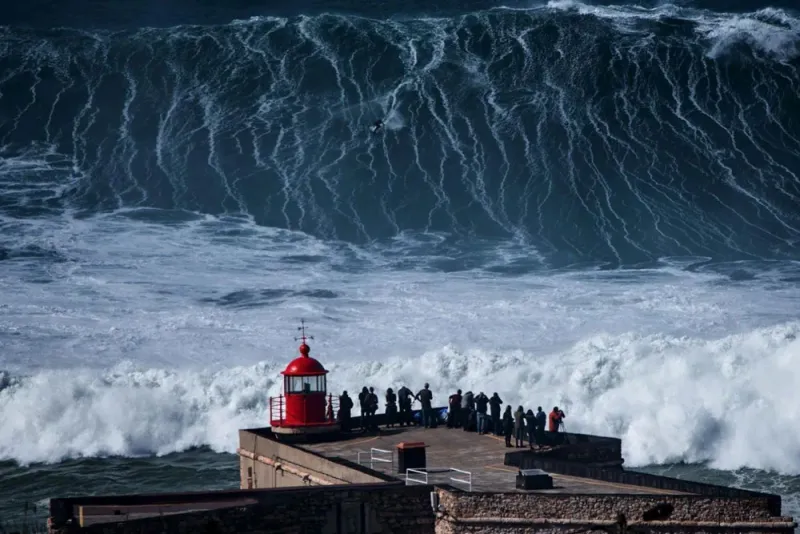
We wake up on the 5th day of this guided motorcycle tour on Portuguese soil to reach the westernmost point: Nazaré.
Traveling on the roads of Portugal is an experience in itself, no matter what vehicle you’re in. It’s important to keep in mind that the famous saying “when in Rome, do as the Romans do” is something we’re not going to follow this time. No matter how many crazy things we might see, our group will always pay full attention to the safety rules. If you’ve never driven on Portuguese roads before, you’ll see exactly what I’m talking about.
The route follows a combined “Sport-Touring” layout, which means we’re going to have a good mix of curves with faster, more enjoyable stretches, passing through villages that seem frozen in time. A true feast for the eyes.
Besides being almost directly aligned with Valencia, Nazaré is world famous for its incredible waves, which sometimes reach heights of up to 100 feet (30 meters) due to an underwater canyon more than 16,000 feet (5,000 meters) deep that amplifies their size. A pure show of nature’s power that makes you feel tiny. We’ll probably enjoy watching some of the thousands of surfers who come to this small town from all over the world to practice their sport and try to break the world record that a guy named Garrett McNamara set in 2011 by surfing a roughly 80-foot (24-meter) wave, which put Nazaré firmly on the world surfing map.
Well, it’s clear this might not be the best place for a quiet swim in the sea, so after arriving and settling into the hotel, we’ll spend time strolling through its streets, filled with sea aromas, looking at old boats and maybe hearing tales of sea monsters told in taverns that smell of beer. And of course, we’ll go watch the waves — that’s a must. Will we take the funicular up to the Miradouro do Suberco to do it? We’ll decide when we get there. Go by the flow.
Nazaré is a fishing village that’s adapted over time to become a tourist hotspot, mainly — as I said before — because of surfing. This means its cuisine will delight us with fish stews, grilled sardines (I love them), seafood rice, or goose barnacles. And to finish off dinner, their typical sweet: the nazarenos, little pastries filled with cream or almond. I bet you can’t eat just one...
After dinner, we’ll go to bed with the murmur of the sea rocking us off to dreamland.
See you tomorrow!
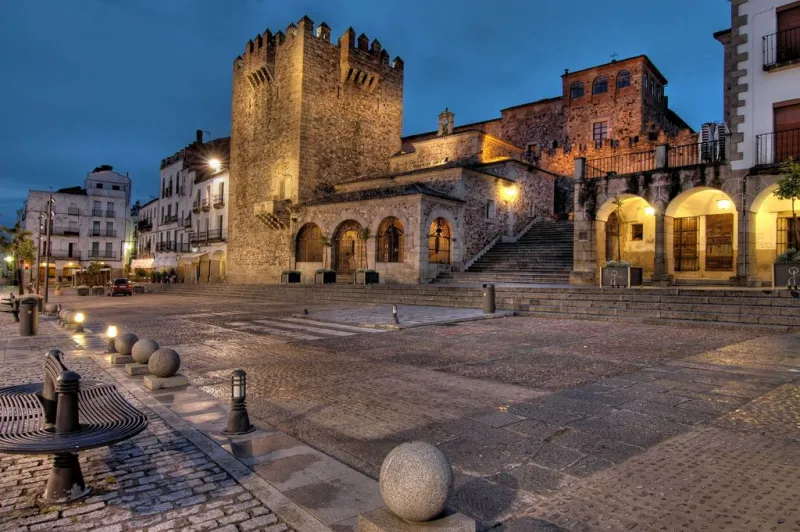
If you thought for a moment that there are no twisty roads in Portugal, today’s route is going to prove you wrong.
After breakfast, we leave behind the sound of the waves (by the way, beautiful book by Yukio Mishima) and head back toward Spain, letting the scenery flow peacefully from the seashore to the fields of Extremadura.
Our destination is Cáceres, a city declared a UNESCO World Heritage Site in 1986 thanks to its perfectly preserved Monumental City, where Romanesque, Islamic, Gothic and Italian Renaissance styles mix together. I don’t know if we’ll be able to tell them all apart, but what’s certain is that walking through the old town is like traveling back in time. Yes, I know that’s a cliché phrase that gets used a lot, but in Cáceres it’s truly a tangible reality — you’ll see it for yourself: cobblestone streets, medieval palaces, churches and walls that look like they’ve come straight out of all kinds of movies. In fact, it’s been the set for series like Game of Thrones. I’ll give you a couple of fun facts in case you’re a fan (I am):
In 2016, HBO chose Cáceres to film several scenes of the 7th season of Game of Thrones, transforming the cobbled streets and walls of the Monumental City into King’s Landing, the capital of the Seven Kingdoms. It was also the setting for Euron Greyjoy’s triumphant return, when he presents Cersei with Ellaria Sand and Tyene as prisoners. Awesome scene, by the way.
Part of why they decided to shoot in Cáceres, as the producers said, was because they hardly needed to modify anything digitally: they just had to remove some modern signs and a few cables to take the city right back to the Middle Ages.
So hey, maybe if we feel like it we can even get one of those guides to do the “Game of Thrones tour” of Cáceres and explain it all to us in detail. What do you think?
We’ll arrive at the hotel, unload, freshen up and take a walk — whether it’s guided or not, we’ll decide on the fly.
Like in the vast majority of towns and cities in southern Spain, we have two options for dinner: going out “for cañas” or sitting down in a restaurant. The first option is to go bar-hopping or just stick with one we like and keep ordering small beers (cañas), each of which comes with a free tapa on the house. Calling what they serve a “tapa” is sometimes really an understatement, because the delights they pile on bread to go with your beer could easily top the lists of the most exquisite treats you could imagine.
Some people go to a bar, order a caña, and depending on the tapa they get, either stay for another round or move on to the next bar (there are loads, you’ll never get through them all — not on two legs anyway, that’s for sure) and repeat the same ritual: order a caña, wait for the tapa.
Others say the best “strategy” is to keep ordering cañas in the same bar because the variety is huge, and the waiters “reward” you with the best tapas if they see you’re sticking around and still ordering. Everyone’s got their own favorite technique.
By the way, if you’re like me and your stomach is bloated by the third beer, you can always swap the caña for a glass of Extremadura wine, which is becoming more and more renowned for its quality. I’ll definitely go for that option — a little beer to cool down and then on to enjoying local wines. How does that sound?
The other option is dinner in a restaurant, sitting down calmly and chatting about all we’ve experienced and still have ahead of us — telling “biker stories,” which we all love so much when we’re on two wheels. That’s also a possibility and again, we’ll decide on the fly. Isn’t it great to have options? If only all of life’s big decisions were about how to have dinner… haha.
Whatever we decide, we’re going to enjoy this land of Iberian cured meats like acorn-fed ham (seriously, no joke there!), lomo, chorizo, cheeses among which Torta del Casar stands out — a creamy, strong cheese — migas extremeñas and game dishes. As usual, we’re not going to be able to finish it all, trust me. If we still have room, we can top it off with something sweet like perrunillas, handmade cookies with a slightly sandy texture that melt in your mouth, their flavor somewhat like butter cookies with a hint of anise.
Anyway, as you can see, when it comes to eating or dining, we won’t be short of options in Extremadura. After dinner we’ll go to sleep in our selected hotel, which of course is located right in the old town and has that “stately charm” straight out of a movie, since the building is a restored noble house that preserves original elements like a library and attic rooms, combining history with modern comfort.
Almost guaranteed we’ll be dreaming of dragons tonight… off to bed, more tomorrow!
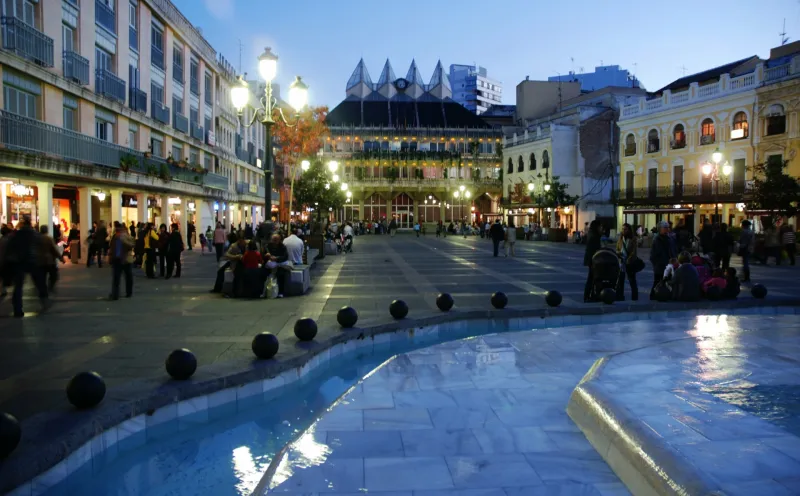
We say goodbye to the dragons of Cáceres, and our guided motorcycle tour sets off toward Ciudad Real along roads that combine winding stretches completely surrounded by fields and low vegetation, with twisty roads that run alongside reservoirs like the Cíjara, built between 1902 and 1956 on the Guadiana River. Its surface area of 16,220 acres (6,565 hectares) creates a gigantic “inland sea,” with a tail stretching 28 miles (45 km) — simply spectacular.
Heads up, because in this reservoir area we’ll need to be careful: we’re intruding (let’s never forget we’re the ones passing through “their home”) on the natural terrain of the local wildlife, which mainly includes deer, wild boar, fallow deer, otters, eagles, griffon and black vultures, storks, and even the Iberian lynx in the wooded areas. I repeat — watch out, because it’s not unlikely that some of these land animals might cross the road, startled by our presence. Birds will almost certainly accompany us, watching over us from the sky. So we’ll keep our eyes wide open not to miss any of the beauty around us.
Our lunch stop — which by the way, even if I haven’t mentioned them the last few days, rest assured we’re definitely eating on this trip — will be in one of the typical taverns of La Mancha, where pisto manchego, migas, gachas, lamb stews, and the most exquisite cured meats will take center stage, sure to delight our palates and fill our bellies.
After lunch, we’ll continue the route to arrive in the late afternoon at today’s destination: Ciudad Real.
This city with such a grand name was founded in 1255 by King Alfonso X “the Wise” and was elevated to city status by John II of Castile. For centuries it was an important strategic military stronghold on the Royal Road to Andalusia.
Its privileged geographic location, at the crossroads connecting Toledo with Córdoba and Seville, as well as the route toward the Levante, helped the city develop as a major agricultural and livestock market for La Mancha. Since the 13th century, commercial fairs were held here, attracting merchants from Castile, León, and even North Africa. Caravans, messengers, and transporters passed through, boosting the local economy with sales of wine, cheese, olive oil, and wool.
So here we are in an old walled city — though few remnants remain after several sieges — that once thrived with commercial life. And thinking of all the miles we’ll have ridden by this point in the trip, I thought it wouldn’t be a bad idea to book rooms in a hotel that features a fully equipped spa center with a central hydrotherapy pool under a luminous dome, a complete thermal circuit with hot and cold water pools for refreshing contrasts, high-pressure jets for therapeutic massage, a Finnish sauna, and a steam bath (hammam) with a “starry sky” effect, as well as a “Temple of Showers” and a relaxation area with heated benches, plaster arabesques, and a tea or juice service. And if that’s not enough, there’s also a 2,100 sq ft (200 m²) fitness room with state-of-the-art machines and a weight area. So this time, whether you go out for a walk or decide to relax, I’ll leave entirely up to you. Just pack your swimsuit in your bag, and decide once we get there.
Since we probably won’t have managed to try all the culinary delights of La Mancha at lunch, for dinner we’ll head to a restaurant to keep delighting ourselves with the local food culture — and of course with their wines under the La Mancha Denomination of Origin, which are excellent (trust me on that) and perfect to accompany artisanal Manchego cheeses. I’ll just leave that there.
After dinner, we’ll get some rest because this doesn’t stop, and tomorrow we’ve got another great stretch ahead of us to enjoy. Good night!
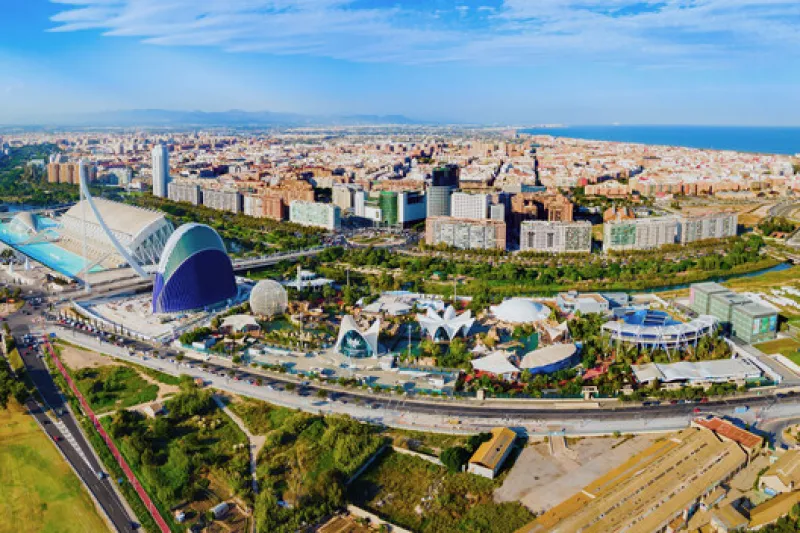
If you think that just because today is the last leg of our guided motorcycle tour the “punch” of the experience is going to fade, you’re completely wrong.
Twisties and more twisties, landscapes of all kinds, and the Mediterranean peeking out on the horizon are going to set the biker pace today. I’ll only reveal this much: we’re going to pass, for example, through one of the most famous motorcycle route sections in Valencia — Villatoya.
This point on the route is without a doubt one of the most technical areas of our trip, but heads up, because its blind curves and crests can play tricks on you. You have to pay close attention to the pace and rhythm set by the guide (which will usually be me), since in an instant it can switch from being a place to enjoy pure motorcycling to becoming a real hazard. The layout is so “tasty” that I know bikers (and I’m not making this up, I’ve seen it firsthand) who spend entire weekends riding just this stretch over and over again. But I’ll repeat: you have to understand that by then we’ll have done 7 days of riding and roads, and our reflexes won’t be at 100%. If you add the weight of the luggage and the fatigue, we could be sitting on a little time bomb. I’m not trying to scare anyone — please don’t take it that way — I’m just sharing my experience so you can picture it, and so we can ride together under the highest safety standards.
Villatoya is a cool spot, but it’s neither the only one nor the last. We still have roads ahead that wind through the vineyards of the Requena area and the descent to Yátova from El Pontón, where the road becomes a delight both in scenery and layout, so we can enjoy it to the fullest.
By late afternoon, we’ll check back into the hotel in Valencia that welcomed us on the first day, and I think the best plan will be to take a dip in its pool and relax a bit before dinner.
We’re in Valencia, and our dinner options include a flamenco dinner show (not a bad ending, huh!?), a dinner with views of Malvarrosa Beach, or maybe a restaurant we can walk to and from calmly from the hotel. Any of these is truly a great way to close out the experience. Of course, tonight there’s no set bedtime — everyone can enjoy the nightlife of this city, voted “The Best City in the World to Live In” in 2024, however they want.
Tomorrow we say goodbye. Good night!
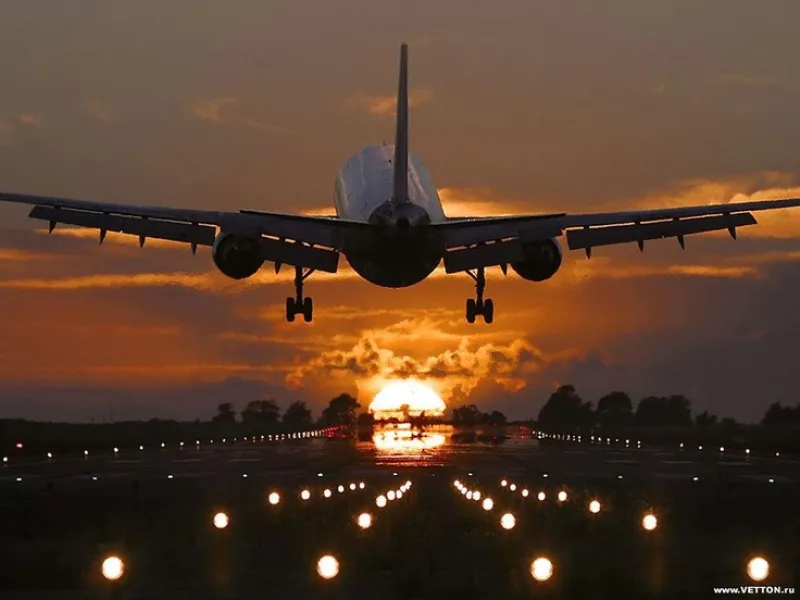
We wake up on what’s already the 9th and final day of this experience, each of us with whatever hangover we earned last night (I’m not taking responsibility for that one 😜), but still with bodies buzzing from all the excitement we’ve lived these days.
We’ll head down to breakfast together, with those faces that mix happiness, fatigue, and that little touch of nostalgia because this, my friends, is coming to an end. It’ll be time to return the bikes for those who rented, while those of you who came on your own machines will start heading out bit by bit on the road back home, with your heads full of memories and hearts just a little bit bigger.
For those who rented a bike, after dropping them off, we’ll take you back to the airport, port, or train station where we first picked you up, closing the circle exactly where we began, with the same excitement… though this time with a whole bunch of stories in your pocket.
Of course, we’re not leaving without that hug that says “until next time,” because this isn’t goodbye. This has only been the beginning of many more rides waiting for us, together or on our own, but always with that bond that’s now, for sure, going to last a lifetime.
And if you’re wondering — yes, we’ll absolutely make a WhatsApp group to stay connected, share the hundreds of photos and videos we’ve taken on this trip, and keep laughing about all the stories that came up mile after mile. And who knows… maybe that group will end up planting the seed for the next adventure.
So there’s really nothing more to add except a huge THANK YOU for being part of this. It’s been an absolute pleasure to share the asphalt, landscapes, meals, laughs, and more than a few beers with you.
Until next time, see you out on the road and… Ride safe. 🏍️✌️















